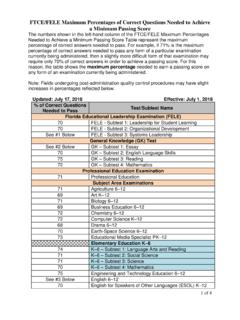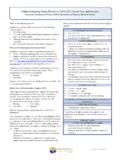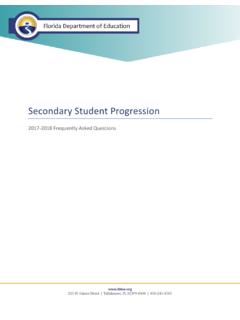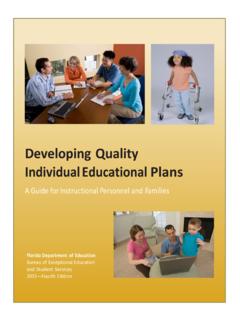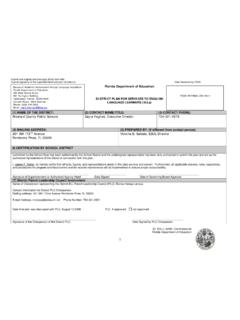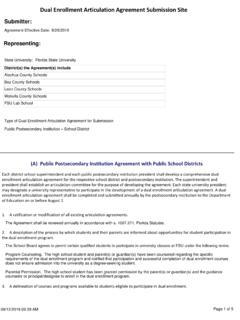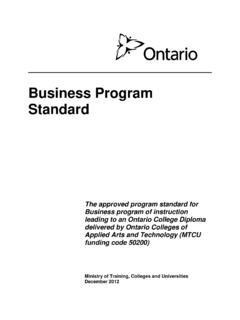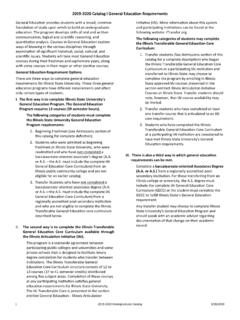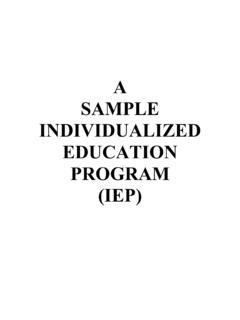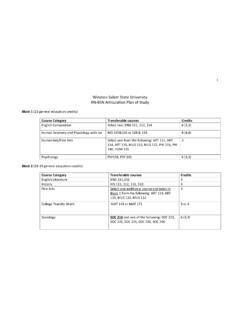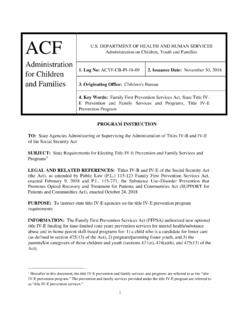Transcription of Dual Enrollment Frequently Asked Questions
1 Dual Enrollment Frequently Asked Questions Dual Enrollment is an acceleration mechanism that allows students to pursue an advanced curriculum relevant to their individual postsecondary interests. Each year, more than 60,000 students participate in Florida's dual Enrollment program, and the number is growing. According to the Department of Education, college credit earned prior to high school graduation reduces the average time-to-degree and increases the likelihood of graduation for the students who participate in these programs . There is also evidence that dual Enrollment increases academic performance and educational attainment. As the emphasis on career planning increases, students will be encouraged to select courses that align with their postsecondary goals.
2 As with all acceleration options, students should be advised based on individual needs and carefully monitored to ensure success. School counselors play an important role in communicating accurate information to students and parents, fostering a positive understanding of the merits of dual Enrollment and developing collaborative relationships with college advisors and peers. Dual Enrollment is one of a number of acceleration options available that enable students to pursue a rigorous curriculum for high school graduation, as well as earn credit toward a degree or industry certification. The ACC Credit-by-Examination Equivalencies report ( ) lists a number of examination programs in which students may earn college credit for successful completion of an exam.
3 Advanced Placement (AP), International Baccalaureate (IB) and Advanced International Certificate of Education (AICE) also include coursework for a standard high school diploma. Other included examinations are the College-Level Examination Program (CLEP), DSST, and UExcel (Excelsior) in which students complete only the exam for college credit. For students participating in AP, IB, and/or AICE as well as Dual Enrollment , counselors and students should refer to the ACC Credit-by-Examination list to ensure that a student is not repeating college credit coursework through dual Enrollment that could be awarded based on exam scores. Students may also participate in career dual Enrollment for courses that will lead to an industry certification.
4 Many industry certifications will articulate to college credit toward a degree. A listing of articulated industry certifications may be found at: Students and Parents 1. What is dual Enrollment ? Dual Enrollment is an acceleration program that allows students in grades 6-12, including home education and private school students and students with disabilities, to take postsecondary coursework and simultaneously earn credit toward a high school diploma, a career certificate, an industry certification or an associate or baccalaureate degree at a Florida public or eligible private postsecondary institution. 2. What is early admission? Early admission is a form of dual Enrollment permitting high school students to enroll in college or career courses on a full-time basis.
5 As with all dual Enrollment programs , students earn both high school and college/career credits for courses completed. Career early admissions is a form of career dual Enrollment through which eligible secondary students enroll full-time in a career center or a Florida College System institution in postsecondary programs leading to industry certification, as listed in the CAPE. Postsecondary Industry Certification Funding List pursuant to section (s.) , Florida Statutes ( ). Participation in the career early admission program shall be limited to students who have completed a minimum of four (4) semesters of full-time secondary Enrollment . 3. How many credits must a student take in the early admission dual Enrollment program?
6 Early admission students must enroll in minimum of 12 college credit hours per semester, but cannot be required to enroll in more than 15 college credit hours per semester. 4. What is career dual Enrollment ? Career dual Enrollment is an option for secondary students to earn industry certifications adopted pursuant to s. , , which count as credits toward a high school diploma. Career dual Enrollment is available for secondary students seeking a certificate or degree and industry certification through a career education program or course. 5. Who is eligible to take dual Enrollment courses? Students must meet the following eligibility criteria per Section (3), : Be enrolled as a student in a Florida public or nonpublic secondary school (grades 6-12), or in a home education program.
7 Have a unweighted high school grade point average (GPA) to enroll in college credits, or a unweighted high school GPA to enroll in career dual Enrollment courses;. For college credits, achieve a minimum score on a common placement test pursuant to Rule 6A- , Florida Administrative Code ( );. Meet any additional eligibility criteria specified by the postsecondary institution in the Dual Enrollment Articulation Agreement; and Not be scheduled to graduate from high school prior to the completion of the dual Enrollment course. All students in grades 6-12 who meet these eligibility requirements and/or additional eligibility requirements as determined in the articulation agreement must be allowed to participate in dual Enrollment .
8 Any additional eligibility requirements or limits on dual Enrollment participation based on grade levels must be only to ensure college readiness and not to arbitrarily prohibit students who have demonstrated the ability to master advanced courses from participation. Students must maintain at least a unweighted high school GPA and the minimum required postsecondary GPA specified in the Dual Agreement Articulation Agreement for continued eligibility to participate in college credit dual Enrollment courses. 6. What are the eligibility requirements for students in home education programs ? Home education students shall have equal access to dual Enrollment as public school students. Home education students must present evidence to the postsecondary institution that the home education program is in compliance with s.
9 , It is not the statutory requirement that home education students present a transcript at the time of entry to the dual Enrollment program; however, there may be educational benefits to the student for sharing their education background. Each postsecondary institution must enter into a Home Education Articulation Agreement with each student seeking Enrollment in a dual Enrollment course and the student's parent/guardian. 7. Are prospective college credit dual Enrollment students required to take a common placement test such as the Postsecondary Education Readiness Test (PERT)? Yes. Students must still demonstrate readiness for college credit postsecondary instruction in Mathematics or English, pursuant to s.
10 (6), , by meeting or exceeding the college ready score(s) established in Rule , Public high school students shall have opportunities to test at the high school as described in the Dual Enrollment Articulate Agreement. For home education students seeking to participate in dual Enrollment , the Florida College System institution in the school district's service area for which the home education student is registered should provide the opportunity to test (one administration per subtest) at that institution. Nonpublic high school students' testing opportunities are at the discretion of the postsecondary institution and may be included in the Dual Enrollment Articulation Agreement. 8. If a student is registered for attendance with a private high school, may they also be considered a home education student?


